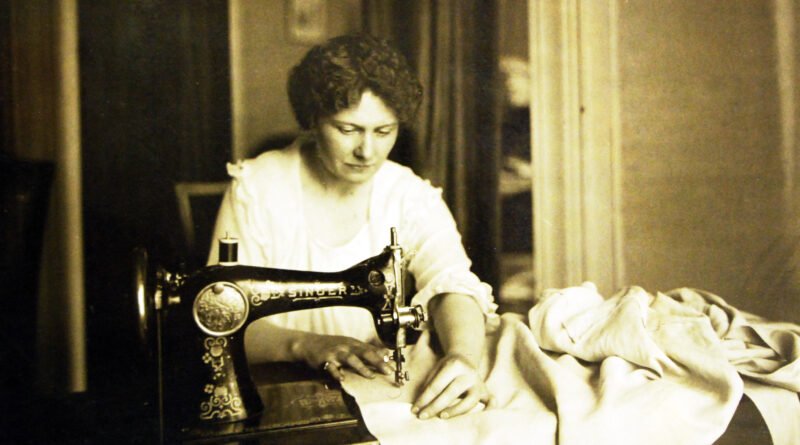The Journey Through the History of Sewing
Sewing is the art of joining fabrics together using a needle and thread. This skill has been essential for creating clothing, household items, and even art. It dates back thousands of years and reflects the creativity and resourcefulness of humans. Sewing is not just about making clothes; it also carries cultural significance, representing identity and tradition in various societies. As we delve into the history of sewing, we see how it has evolved and influenced our lives today. This journey reveals the importance of sewing in providing protection, expressing creativity, and connecting people across generations.
The Origins of Sewing
The origins of sewing can be traced back to prehistoric times, with the earliest known sewing tools made from bone and wood. Archaeological finds, such as needles from the Paleolithic era, show that early humans used animal sinews and plant fibers to stitch pieces of animal hides together for clothing. This was crucial for survival in harsh climates. Over time, various cultures developed their own unique sewing techniques, adapting to available materials and environmental conditions. In ancient Egypt, for example, linen was commonly sewn into garments, while in other regions, wool and silk were favored. Sewing became an integral part of life, providing not just warmth but also a means of expressing individuality and status.
Sewing in Different Cultures
Sewing practices vary significantly across cultures, each with its own unique methods and significance. In ancient Egypt, sewing was a skilled craft, with intricate designs and styles that showcased social status. Egyptians often used linen to create garments that were both functional and beautiful. In Asia, particularly in China and Japan, sewing evolved into an art form, with techniques like embroidery and patchwork that adorned clothing and household items. Indigenous cultures in the Americas also had rich sewing traditions, using animal skins and natural dyes to create clothing that reflected their environment and beliefs. These diverse practices highlight the universal importance of sewing in human culture, as it serves both practical and artistic purposes.
The Evolution of Sewing Tools
The tools used for sewing have undergone remarkable changes throughout history. Early humans crafted simple needles from bone, thorns, or wood, using them to stitch together animal hides and plant materials. As civilizations advanced, metal needles were developed, making sewing easier and more efficient. The invention of the sewing machine in the 19th century revolutionized the craft, allowing for faster and more precise stitching. Pioneers like Elias Howe and Isaac Singer made significant contributions to sewing machine technology, which transformed the textile industry and made sewing accessible to the masses. Today, modern sewing machines come with various features, such as automatic threading and embroidery options, showcasing how technology continues to shape the art of sewing.
Sewing in the 19th Century
In the 19th century, sewing became increasingly popular as a domestic skill, particularly among women. This era saw a shift from handmade to machine-made clothing due to the Industrial Revolution. Factories began producing garments on a large scale, changing how people viewed sewing. While this led to a decline in traditional sewing practices for some, it also inspired many to take up sewing as a hobby or craft. Patterns became widely available, and sewing clubs emerged, allowing women to share their skills and creativity. The 19th century also marked the beginning of fashion as we know it today, with styles evolving rapidly, prompting individuals to sew their own clothing to keep up with trends.
Sewing in the 20th Century
The 20th century brought significant changes to history of sewing and fashion, influenced by both world events and technological advancements. During the World Wars, fabric shortages led to the development of more practical clothing, and many turned to sewing to make do with limited resources. The rise of ready-to-wear clothing in the mid-20th century changed consumer habits, but sewing remained a valuable skill for many households. With the introduction of synthetic fabrics and innovative sewing machines, sewing became more accessible and varied. Additionally, the 1960s and 1970s saw a revival of interest in handmade clothing, with individuals embracing unique styles and self-expression through sewing.
Sewing Today
Today, sewing has experienced a resurgence as more people embrace DIY culture and handmade items. Social media platforms like Instagram and Pinterest have inspired a new generation of crafters to explore sewing as a creative outlet. Many enjoy the satisfaction of making their own clothing, accessories, and home decor. Sewing classes and workshops have become popular, providing opportunities for individuals to learn and share their skills. Sustainable fashion is also on the rise, with many choosing to sew their own garments to reduce waste and promote ethical practices. This modern approach to sewing not only honors traditional skills but also encourages creativity and individuality in fashion.
The Future of Sewing
As we look to the future, sewing continues to evolve alongside technology and societal changes. Innovations like 3D printing and computer-aided design are making their way into the sewing world, allowing for even more creativity and efficiency. The focus on sustainability is also influencing sewing practices, with many seeking eco-friendly materials and methods. This shift encourages a return to thoughtful consumption and creativity, fostering a deeper appreciation for handmade items. Whether through community workshops or online tutorials, the future of sewing looks bright, as individuals continue to connect through this timeless craft while adapting to contemporary needs and values.
Conclusion
The history of sewing is a rich tapestry that weaves together creativity, culture, and innovation. From its humble beginnings to its modern-day resurgence, sewing has played a vital role in shaping societies and personal identities. As we celebrate this skill, we are reminded of its importance in our lives today. Whether you are an experienced seamstress or just starting, exploring the world of sewing can be a rewarding journey filled with endless possibilities. Embracing sewing not only honors its history but also empowers individuals to express themselves and create something uniquely their own.

